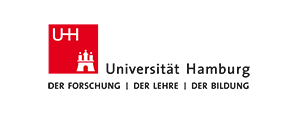Minutes of the fourth International Radiative Transfer Workshop,
July 2002
Monday
Tuesday
Wednesday
Thursday
Whole Week
*******************************************************************
********************** RT WORKSHOP JULY 2002 **********************
*******************************************************************
-----===== MONDAY 2002-07-08 =====-----
1. Welcome Prof. K. Kuenzi
2. PE:
- structure of the workshop
- think about the working groups
- hand out of the agenda and the draft of the intercomparison
paper
- change of agenda:
barbecue on Tuesday
- Ute will give an additional talk about polarization in the UV/vis
on Thursday
- introduction of the workshop members
PE, Chalmers Univ. of Tech., Goeteborg
KK, IUP/sat Bremen - head of ife-microwave groups
DF, IUP Bern - RT, spec. param. catalog data base
SR, IUP/sat Bremen - ARTS scattering
CM, IUP/sat Bremen - ARTS scattering
YK, CRL, Tokyo - SMILES Team
ED, OdB, Bordeaux - Moliere/Odin
JL, OdB, Bordeaux - Moliere/Odin
UR, Swedish Inst. of Space Phys., Kiruna, ground based radiometers
HH, IUP/RAM Bremen - ground based radiometers
AH, IUP/sat Bremen - HIRS data analysis with ARTS
IW, IUP/RAM Bremen - ground based radiometers
MK, IUP/sat Bremen - ARTS application for AMSU-A/B
JM IUP/sat Bremen - polarization and scattering
CV, IUP/sat Bremen - SMILES team
JM, DLR/Berlin - RT models of IR and vis
FS, DLR/Wessling - IR RT models and different other applications
UB, DLR/Berlin - POLDER/ADEOS-I data analysis, RT models in vis/UV
NK, IUP/sat Bremen - spectroscopy, Zeeman effect
HB, Inst of Astronomy, Sao Paulo, Brasil - ground based microwave radiometers
GK, FZK/Karlsruhe - ground based radiometer
CE, IUP/sat Bremen - ARTS scattering
TK, IUP/sat Bremen - ARTS development (water vapor abs. models)
VJ, IUP/sat Bremen - ARTS application for AMSU-A/B
OL, IUP/sat Bremen - sys. administration
3. short presentations of RT models
a) (CE) introduction into scattering in ARTS-1.1
- 1D to 3D RT model
- polarization included in RT equation (Stokes vector)
- spherical geometry included (limb sounding)
- scattering is considered in boxes where clouds are present
b) (UB) RT equation in the vis region
- Fourier series of the azimuth direction to separate this
dimension from the others in the phase function
- matrix operator method
- the ocean surface layer scattering is included into the RT model.
- spherical particles with Mie theory is included
- plane parallel model with 1D atmosphere
c) (FS) MIRART developments
- efficient line-by-line RT model
- switch from pure F77 to F77 with script language Python
- weighting function with automatic differentiation
(fast and more accurate than finite differences)
"more accurate" ---> exact
(at least automatic differentiation Jacobians are as "exact" as the
original code)
d) Spectroscopic Database (DF)
- BEAMCAT -
- merge different databases
- simulation of spectra
- JPL and HITRAN
- different catalogs has good database in different ranges, so
merge data from different sources
- merging problem - lost information, the better way is to merge
data without losing any information
- META CATALOG - contains information that identifies the same
transitions in different catalogs
- SQL database - fast sorting and searching - output format can
be easily changed - new parameters can be added at anytime -
easy web access
- Demonstration of BEAMCAT
- meta catalog has to be made once by identifying the same lines
in all the catalogs(comparing quantum numbers)
- Robust line matching scheme
- web-site to access BEAMCAT data:
http://www.iapmw.unibe.ch/research/projects/BEAMCAT
- info from all catalogs, format independent, easy web
interface, easy t update
- the meta catalog is in the form of a matrix. No limit for
input source. User can update data base or write private
tables and so on. Partition functions also will be added.374
rules to merge JPL and HITRAN. In JPL some places for quantum
numbers are empty and some times letters instead of numbers are used
and this is not documented anywhere. All the entries in
BEAMCAT has a time stamp so that the new additions can be easily identified.
e) Water Vapor Continuum (TKS)
- different models: sources, theory..
- model validation: ARM, lab data
- documentation of CKD model is available in GENLEN2??
- comparison of CKD model, accurate
- SHEBA AERI/LBLRTM radiance to show the effect of different
CKD versions.
- Use of CKD model: ACECHEM, HIRS, climatology UTHMOS
- other continua bands: N2 collision broadening
- Liebe and Rosenkranz may not be valid in FIR region
- MonoRTM V2.01 is Rosenkranz in millimeter range and the normal
CKDv2.4 model in the FIR range
- CKD is the standard model in the FIR range. It contains only
the continuum part and not the lines.
- This model is implemented in ARTS and now ARTS is able to do
calculations in the infrared region
f) Formation of working group
1. Scattering from the Microwave up to the vis/UV
Participants: Claudia, Sreerekha, Christian, Ute, Jana,
Jana, Franz, Nikolay, Joachim
2. Model vs. Data - Comparison and Validation
Participants: Thomas, Mashrab, Viju, Arash, Tim, Susanne
3. JEM/SMILES
Participants: Carmen, Yasuko, Eric,
4. ARTS User Group
Participants: Patrick, Oliver, Ingo, Dietrich, Hermann,
Uwe, Gerhard, Helmut
Monday
Tuesday
Wednesday
Thursday
Whole Week

